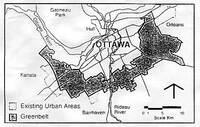- England
- Scotland
- France
- Holland
- Germany
- Italy
- Spain
- Portugal
- USA
- China
- Japan
- India
- Iran
- Advice
- Gardens
- England
- Scotland
- France
- Holland
- Germany
- Italy
- Spain
- Portugal
- USA
- China
- Japan
- India
- Iran
- Advice
- Garden Tours
Book: Landscape Planning and Environmental Impact Design: from EIA to EID
Chapter: Chapter 4 Public open space POS
The idea of surrounding cities with agricultural belts is very old. The Book of Numbers, for example, records that the Lord commanded Moses to give the Levites both cities and suburbs: And the cities shall they have to dwell in; and the suburbs of them shall be for their cattle, and for their goods, and for all their beasts. And the suburbs of the cities, which ye shall give unto the Levites, shall reach from the wall of the city and outward a thousand cubits round about. Green belts can have agricultural, recreational and environmental roles in managing urban growth and giving a defined shape to urban areas. They act as buffers, regulating the intense development pressure which is found at the growth points, where town expands into country. London 's Metropolitan Green Belt was designated to prevent sprawl, as was Ottawa 's National Capital Greenbelt. Most of London 's Green Belt remains in private ownership. Urban growth continues to take place within this Belt but the process is very much slower than it would be without greenbelt designation. Ottawa 's greenbelt was taken into public ownership, largely by the compulsory acquisition of land from private owners. In addition to growth control, it was intended for recreational development and the location of government buildings. Both London 's and Ottawa 's greenbelts have suffered from pressure to build and from the neglect of farmland.
